The Peter and Paul Fortress (Петропавловская крепость) in St. Petersburg, was established by Peter the Great on 16/27 May 1703 (This date is considered by many to be the founding of St. Petersburg.) on a small island on the Neva River. The fort was intended to protect the area from possible attack by the Swedish army and navy--No ships could enter the Neva River without passing first by the fortress--but the fort was never really needed. The fort was completed with six bastions in earth and timber within a year; it was rebuilt with stone between 1706 and 1740.
In the middle of the fortress stands the Peter and Paul Cathedral (Петропавловский собор), built between 1712 and 1733. On top of the spire is a golden angel holding a cross. This "weather vane" is one of the most prominent symbols of St Petersburg (over 120 m. tall). Other structures in the fortress include the Mint building (still active), the City Museum and the Trubetskoi Bastion, built in the 1870s, for political prisoners. The Fortress always served as a prison for political prisoners, including Peter the Great's son Aleksei who died there under "mysterious" circumstances.
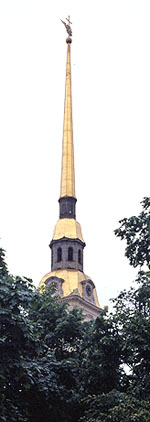

Bridge to the Peter Paul Fortress
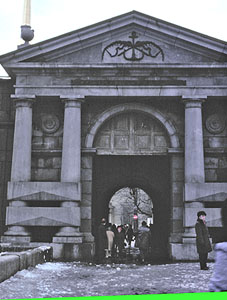
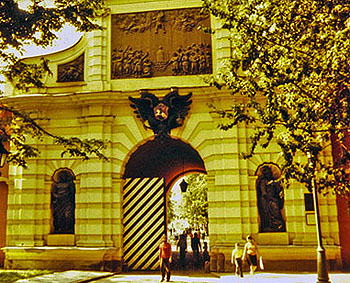
Neva Gate and St. Peter's Gate (1717-1718), two of the three entrances to the fortress.

The Mint, still in use.
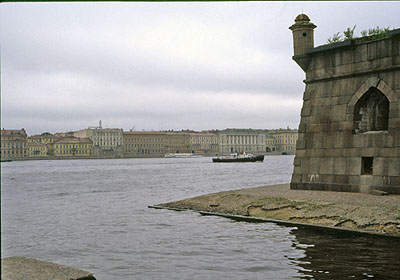
View across the river from the Peter Paul Fortress
These websites all have great images and further information about the Peter-Paul Fortress.
- The Peter and Paul Fortress, More than a Fortress (Great view from above looking down at the
entire island)
- Wikipedia
-
Peter and Paul Fortress (Night
snapshots of Peter and Paul Fortress with author's comments, descriptions and fortress plan)
- Государственный музей истории Санкт-Петербурга
- The Peter and Paul Fortress
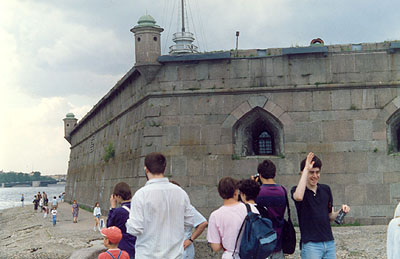
Summer on the beach at the Peter-Paul Fortress.

Winter on the beach at the Peter-Paul Fortress.
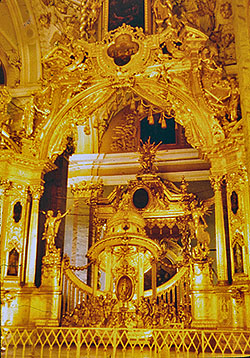
This is the interior of the Peter and Paul Cathedral in the Peter and Paul Fortress, the burial place of most of the Romanov tsars. So you might wonder, where exactly were the Russian rulers all buried?